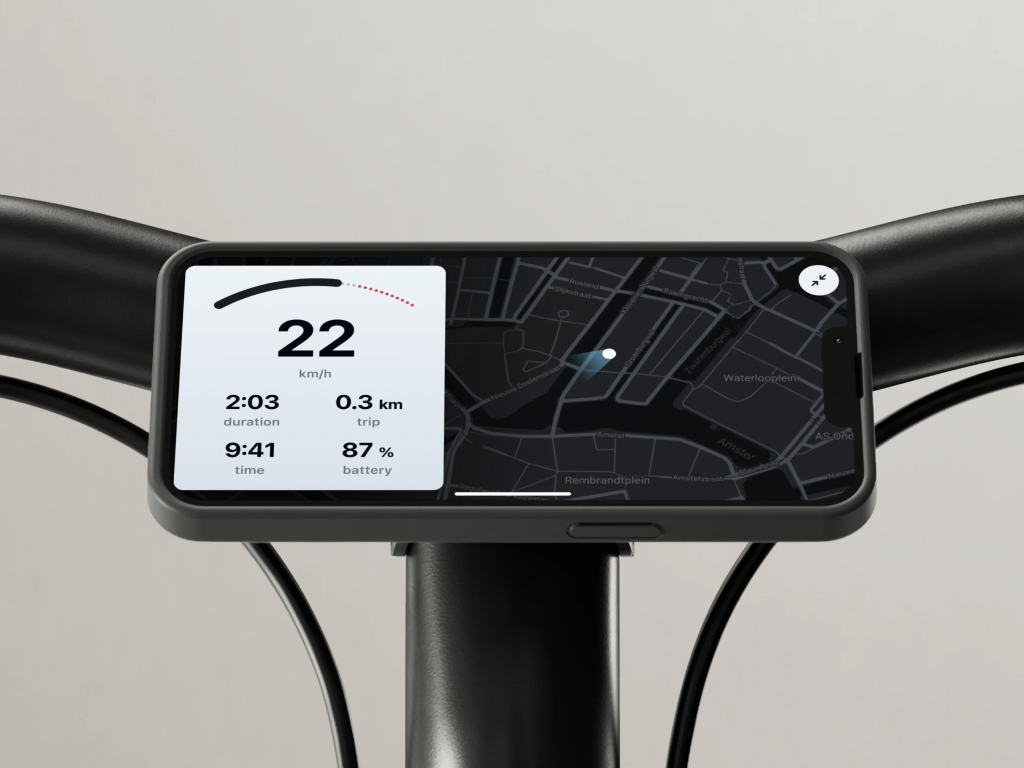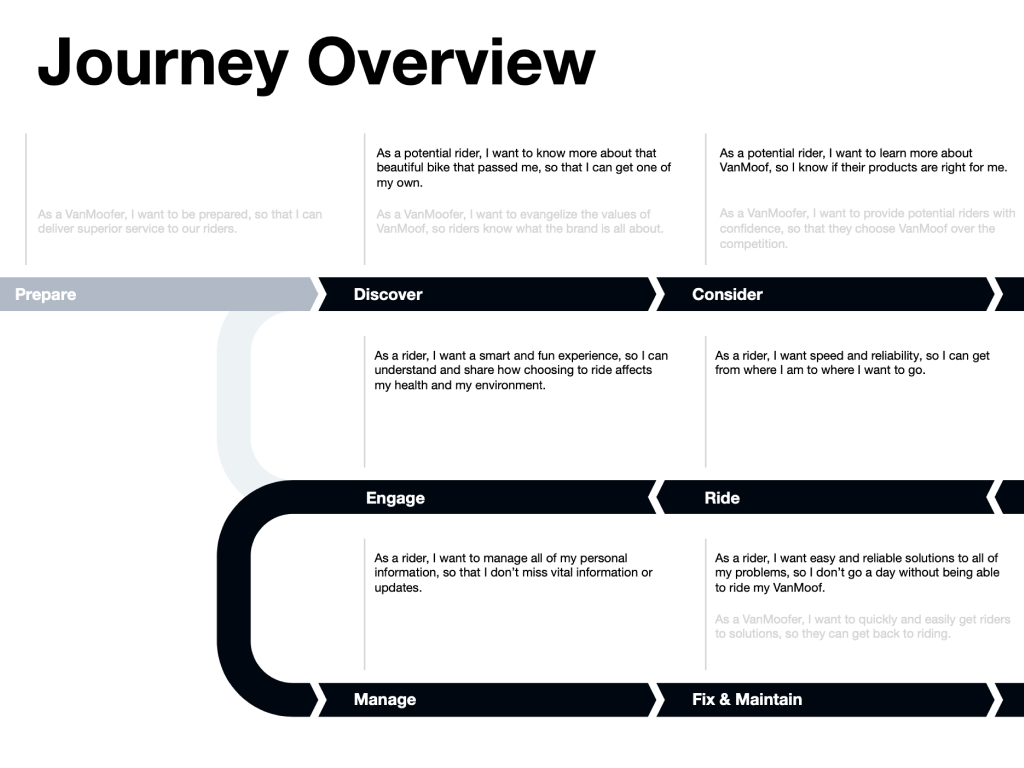Over the past three years, I built and scaled an Experience Design team and practice within VanMoof, a quickly-growing (and now defunct) e‑bike company. Our team worked across the organization, providing digital product design and product management and collaborating with our development partners to bring solutions to life.
The Situation
When I joined the company as Head of Experience Design in 2020, it was 150 people and had just launched a new bike, designed and built all in house. My mandate at the scale-up was to form the Experience Design team and establish a competency that would work across departments, all in time for the launch of our next product.
The Challenge
There was a single in-house designer taking care of the rider app, user manuals, and the website; there were very few repeatable processes in place; and decisions were made by intuition rather than being determined by user needs. I not only needed to build a team to do digital product and service design, UX research, and content strategy, I also had to create new ways of working and persuade the organization to operate in a new way.
The Process
Discover
Meet leaders across the company to understand needs and expectations
Plan
Create processes and a plan for scaling design to support the company's ambitions
Communicate
Roadshow our purpose and way of working to get buy-in from collaborators
Grow
Increase our influence, scale our numbers, and grow our team members
Discover
In my first few weeks at VanMoof, I set about seeking to meet everyone from the c-suite to our customer support specialists. From an internal-user perspective, I worked to get to know what systems they were working with and where they struggled. For our riders, I researched what made them love VanMoof and what caused them frustration. In terms of process, I worked closely with the lone designer, product owners, and developers to get a handle on how we were working and where our efforts were falling short.
With some rough ideas and theories around ways of working, I tackled a handful of well-scoped projects to test out and prove new processes. It quickly became clear what worked, what didn’t, and how the team would need to grow to support the needs of the broader organization.
Plan
Based on what I’d learned in my first few months at VanMoof, I set up a new process and way of working that would put user needs at the center of our decision-making process. This required a multi-faceted approach as we set up new processes for engaging with development as well as with stakeholders.
Establishing a healthy collaboration with developers was step one. Some teams already had a strong way of working with an approach based on user needs and cross-disciplinary collaboration, while others saw design as little more than shapes and colors to be added at the end. In both cases, we continued to work within development sprints to design, refine, build, and test features, while also introducing more strategic processes in front of the Agile structure to ensure that we were tackling the right problems, prioritizing the right features, and producing consistent systems and experiences for our users.
This new way of working led to a stronger collaboration with our marketing and operations stakeholders. With a small company, everyone is connected and organic communication is sufficient for understanding and delivering on business objectives; however, scale requires process to ensure that goals are documented, approaches are aligned, and objectives are met. The design team was uniquely positioned to bridge this growing gap in our organizing by facilitating workshops to gather input and drive alignement, meeting regularly with stakeholders to understand the problems they’re facing, and checking in with users to ensure that their perspectives are present in everything we do.
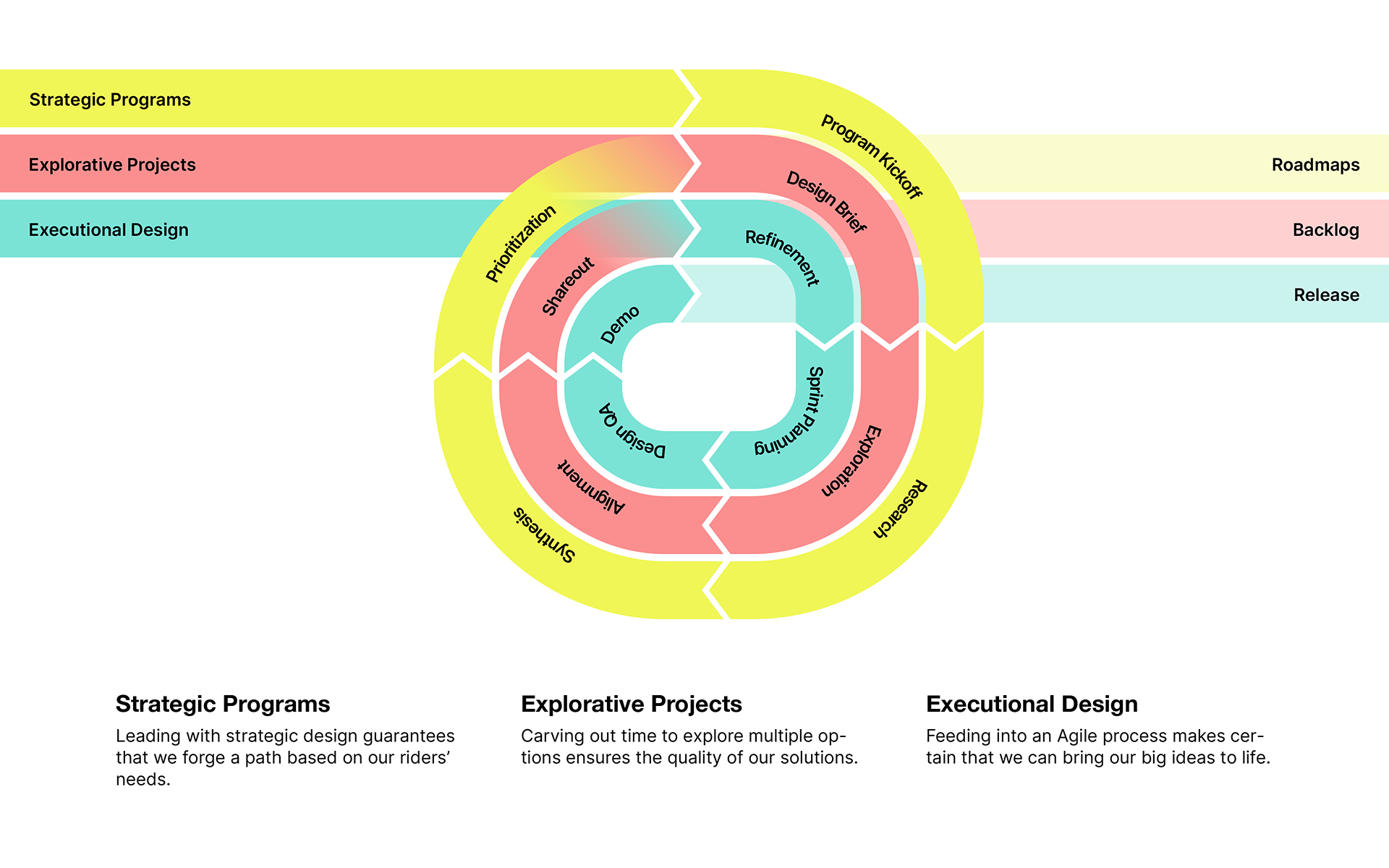
Communicate
Four months after joining VanMoof, the design team was growing and we were building momentum with our new way of working. There were, however, places where we were struggling to break old habits. To ensure that our team had a seat at the table when it came to the strategic definition of initiatives, I documented our way of working, highlighting benefits and setting expectations, and began to roadshow.
I presented to development teams and to stakeholders, educating and creating momentum around this new process. I found allies in the organization to push this new way of working forward, and helped everyone to understand that different problems require different approaches. What at first required a lot of documentation and communication has now become second nature.
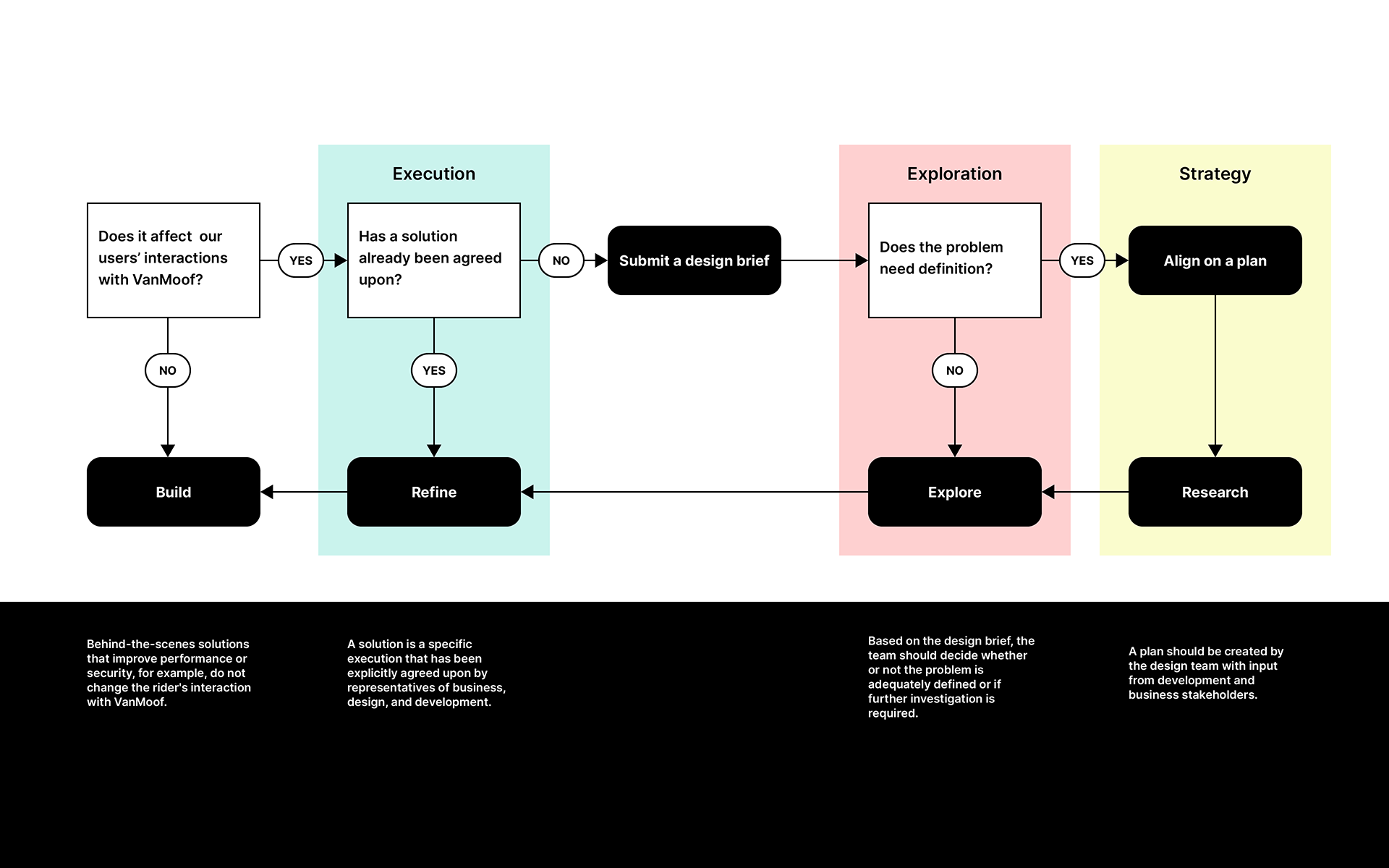
Grow
When I joined VanMoof, the structure was one that had grown organically, and team divisions were more around tech stacks than anything else. Alongside an overhaul of our process, I began hiring for a design team structured around the rider’s experience, with sub-teams focused on user groups with common goals – potential riders (pre-purchase), riders (post-purchase), and internal users. It didn’t take long for us to extend this structure to product and to set clear outcomes related to each group and step in the user journey.
For each part of the journey, we aimed to have one Experience Designer who would look more broadly across the experience to ensure we were chasing the right opportunities and creating consistency. We also had at least one Product Designer, integrating closely with scrum teams to bring features to life. As our development teams grew and divided, both Design and Product introduced a leadership layer to manage the high-level experience and outcomes, taking responsibility for both the work and the people within each sub-team.
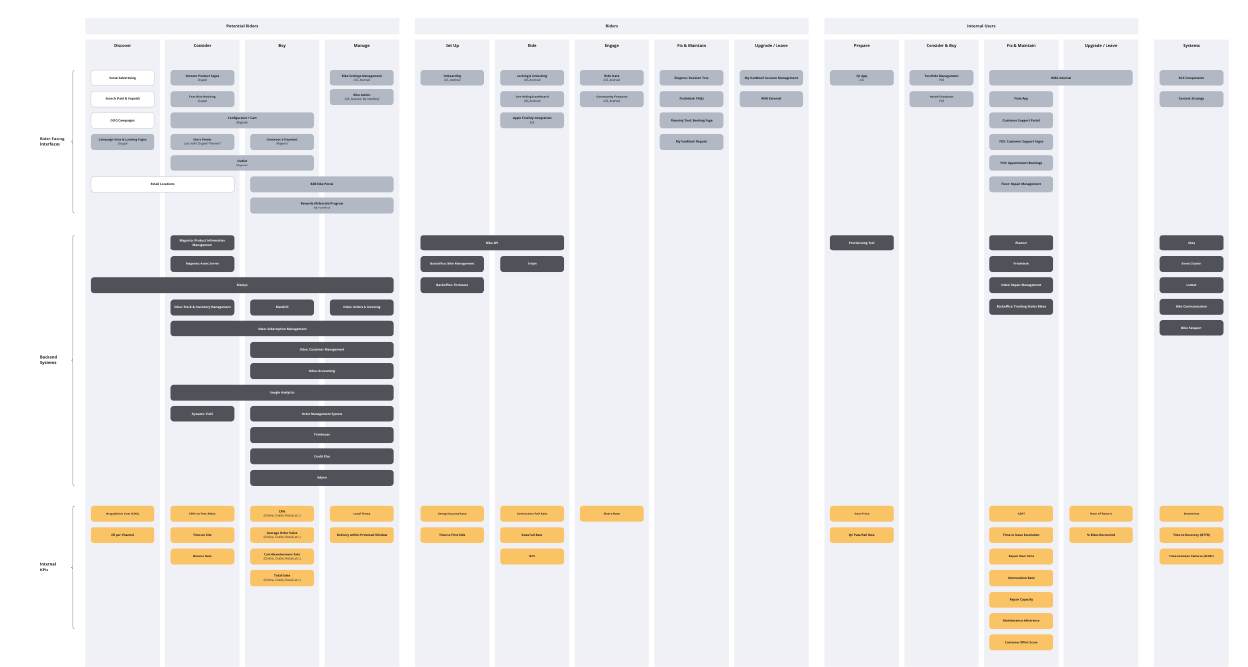
With a growing team, it’s important to provide people with clear guidance for both what’s expected of them as well as how they can grow within the organization. After six months at VanMoof, I introduced a growth matrix for the design organization.
This matrix took three things into account. First, it promotes T-shaped growth to ensure that designers can empathize with and understand other parts of the organization. Second, it provides opportunities of equal levels for both the management and individual contribution growth paths. Third, it sets clear requirements while also being flexible enough to accommodate people who defy categorization (as I’ve often found designers to be).
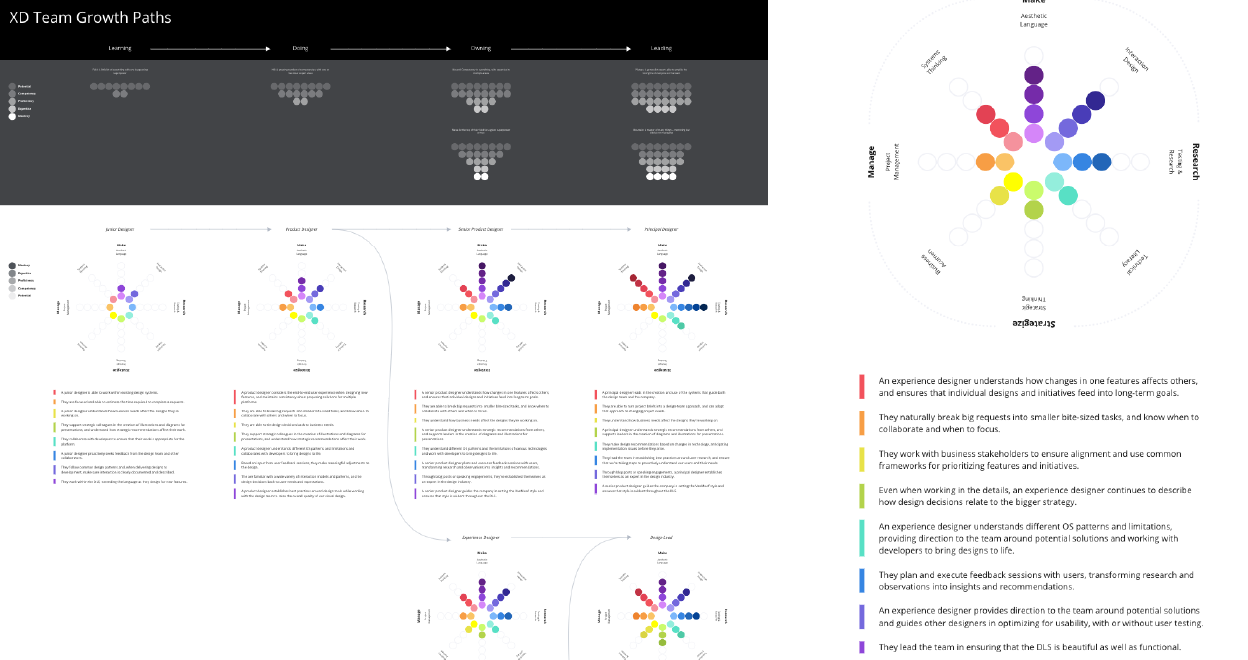
Outcomes
In a relatively short amount of time, we changed the way the organization operates, putting strategic design and product management up front of major decisions for the company. We don't have to fight for a seat at the table; we're invited because the value we add is obvious and necessary.
Takeaways
Design for Diversity
In growing the design team at VanMoof, it’s been a priority to hire people of diverse mobility backgrounds. A city like VanMoof’s native Amsterdam has a much taller-than-average population who are comfortable riding bikes thanks to some of the best cycling infrastructure in the world. This context is great for VanMoof; however, if we only design for tall, bike-loving people in easy-to-ride cities, we’re limiting our reach. By building a team of diverse people from diverse contexts, we approach problems with multiple perspectives and are constantly checking each other’s biases as we develop solutions.
Always Be Positioning
Coming up with a great process and growing a wonderful team won’t get you very far if you haven’t set it all up for success within the company. Roadshowing, communicating, and following up are all as essential to the success of a team as the things that are traditionally more talked about in managment.
Hire Specialized Generalists
With a small team, generalists are essential. As a team scales, specialization proliferates. Specialization can be a good thing, especially in a design team where specialists often bring a level of craft that their more general counterparts cannot achieve; however, it’s important that everyone have a shared foundation. The common knowledge shared by people posessing T-shaped skills ensures solid collaboration while also making the team more resilliant if someone leaves or if the company downsizes.
